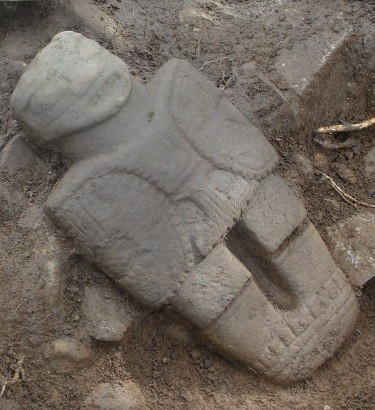In Photos: World Heritage Sites Dazzle With Culture & Beauty
World Heritage Sites

The United Nations Educational, Scientific and Cultural Organization (UNESCO) announced six new sites it would add to its World Heritage list on June 23, 2014. The organization chooses sites based on various criteria, including whether a site represents a masterpiece of creative genius, records testimony of a vanished civilization or holds exceptional natural beauty.
Here, one of the new additions, the Bolgar Historical and Archaeological Complex, located along the Volga River in the Russian Federation, south of Kazan, Tatarstan. The archaeological site preserves remnants of the medieval city of Bolgar. [Read full story]
Along the Volga

Another view of the Bolgar Historical and Archaeological Complex along the Volga River. The site was the capital of the Golden Horde, the northwestern region of the Mongol Empire, in the 1200s. [Read full story]
Himalayan Park

Great Himalayan National Park covers an area of 754 square kilometers (291 square miles), according to UNESCO. "The GHNP is one of the most picturesque areas in the Western Himalayas, well known for its exquisite floral and faunal biodiversity," UNESCO writes as part of its justification for adding the park to the World Heritage list. The park, the statement goes on, also supports a wide range of wildlife habitats and high biological diversity. [Read full story]
Great Himalayan National Park

Great Himalayan National Park (GHNPCA), which lies in the western part of the Himalayan Mountains, also became a World Heritage site. Located in Himachal Pradesh, the northern Indian state, the park is home to the endangered snow leopard and the red-headed vulture, along with other threatened species. [Read full story]
Wildlife sanctuary

The Mount Hamiguitan Range Wildlife Sanctuary runs atop a north-south mountain ridge down the Pujada Peninsula, in the southeastern part of the Eastern Mindanao Biodiversity Corridor in the Philippines. The sanctuary is the only protected forest with a unique bonsai field or "pygmy" forest of 100-year old trees in an ultramafic soil, or a type of igneous soil, UNESCO notes. [Read full story]
Amazing trees

Each of the five vegetation types of the Mount Hamiguitan Range Wildlife Sanctuary supports endemic, threatened and rare flora and fauna. For instance, two dominant species of the so-called mossy-pygmy forest, Leptospermum flavescens and Wendlandia nervosa are found only in this forest type. [Read full story]
Weird stone spheres

Pre-Columbian Chiefdom Settlements were also added to the World Heritage list. Dating to between A.D. 500 and 1500, the site encompasses archaeological remains of human civilization before the Europeans arrived in Costa Rica. Perhaps most provocative about the site are its stone sphere, which range in size from 2.3 to 8.4 feet (0.7 to 2.57 meters) across. Dotting the site, the spheres remain puzzling to scientists who aren't sure how the stones were made or why. [Read full story]
Get the world’s most fascinating discoveries delivered straight to your inbox.
Pre-Columbian remains

The Pre-Columbian Chiefdom Settlements contain four archaeological sites in the Diquis Delta in Costa Rica. [Read full story]
Karst landscape

UNESCO, in addition to adding six new sites to its World Heritage list, also expanded existing sites, including the South China Karst site (shown here). The site will now boast an area that's 124 acres (50,000 hectares) larger. Karst landscapes, like this one that spans four provinces in southern China, emerge when limestone or other dissolvable rock erodes to form stunning shapes, often pockmarked with caves. [Read full story]
Amazing Karst

The South China Karst site was inscribed on the World Heritage List in 2007. It represents one of the world’s greatest examples of humid tropical to subtropical karst landscapes.
Space Rock evidence

A 9-mile-long (15 kilometers) row of cliffs reveals the geological boundary between the Cretaceous Period and Tertiary some 65 million years ago when a space rock is thought to have crashed into Earth and wiped out the dinosaurs. These chalky cliffs on Denmark's island of Zealand hold a layer of ash marking this devastating collision with Earth that left the Chicxulub crater in Mexico. [Read full story]

